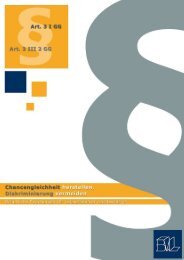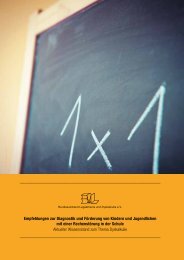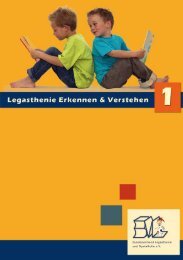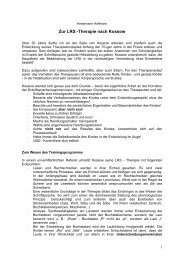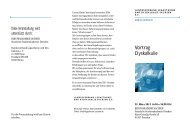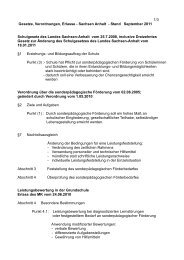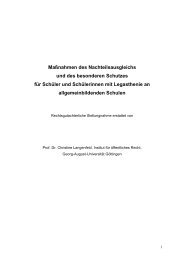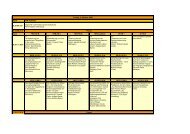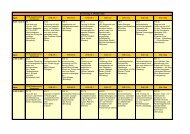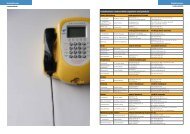Testverfah - Bundesverband Legasthenie und Dyskalkulie eV
Testverfah - Bundesverband Legasthenie und Dyskalkulie eV
Testverfah - Bundesverband Legasthenie und Dyskalkulie eV
Erfolgreiche ePaper selbst erstellen
Machen Sie aus Ihren PDF Publikationen ein blätterbares Flipbook mit unserer einzigartigen Google optimierten e-Paper Software.
Abstractband 15. Kongress des <strong>B<strong>und</strong>esverband</strong>es <strong>Legasthenie</strong><br />
Neurobiology of dyslexia: a new perspective<br />
*Franck Ramus<br />
Laboratoire de Sciences Cognitives et Psycholinguistique Ecole Normale Supérieure, Ecole Normale<br />
Supérieure, Paris, Frankreich<br />
Theories of developmental dyslexia differ on how to best interpret the great variety<br />
of symptoms (linguistic, sensory, motor) observed in dyslexic individuals. One approach<br />
views dyslexia as a specific phonological deficit, which sometimes co-occurs<br />
with a more general sensorimotor syndrome. I will review the neurobiology of<br />
dyslexia and show that neurobiological data are indeed consistent with this view,<br />
explaining both how a specific phonological deficit might arise, and why a sensorimotor<br />
syndrome should be significantly associated with it. This new conceptualisation<br />
of the aetiology of dyslexia may generalise to other neuro-developmental disorders,<br />
and may further explain heterogeneity within each disorder and co-morbidity between<br />
disorders.<br />
Korrespondenzautor:<br />
Franck Ramus<br />
franck.ramus@ens.fr<br />
++33 1 44322356<br />
++33 1 44322360<br />
Dyslexia susceptibility genes on chromosome 2q<br />
*Wendy Raskind<br />
University of Washington, Department of Medicine, Washington, Vereinigte Staaten<br />
von Amerika<br />
Impaired phonological decoding is one of the core deficits of dyslexia. In families ascertained<br />
in the UW LDC through a school-aged child with dyslexia, impairments in<br />
rate of phonological decoding remained stable from childhood to adulthood, despite<br />
varying degrees of compensation for reading text. We performed a genome scan<br />
of two continuous measures of phonological decoding ability: phonemic decoding<br />
efficiency (PDE), a measure of both accuracy and speed, and word attack (WA), a<br />
measure of accuracy alone. Multipoint variance component linkage analyses (VC)<br />
and Markov chain Monte-Carlo (MCMC) multipoint joint linkage and segregation<br />
analyses on 108 pedigrees revealed a strong signal on chromosome 2 for PDE (VC-<br />
LOD=2.65 and intensity ratio (IR)=32.1). The IR is an estimate of the ratio of the<br />
posterior to prior probability of linkage in MCMC analysis. This chromosome 2 signal<br />
was not seen for WA. More detailed mapping with additional markers provided statistically<br />
significant evidence for linkage of PDE to chromosome 2, with VC-LOD=3.0<br />
and IR=59.6 at D2S1399. The multipoint VC-LOD score corresponds to a theoretical<br />
p value of 0.0001. Parametric analyses, using a model obtained by complex<br />
segregation analysis, provided a multipoint maximum LOD=2.89. The consistency<br />
of results from three analytic approaches provides strong evidence for a locus on<br />
chromosome 2q that influences speed but not accuracy of phonological decoding.<br />
78



